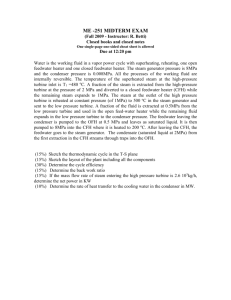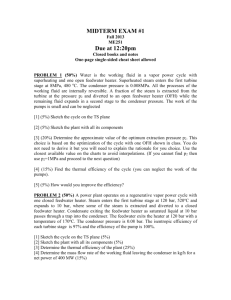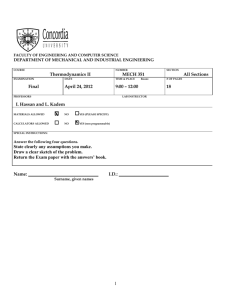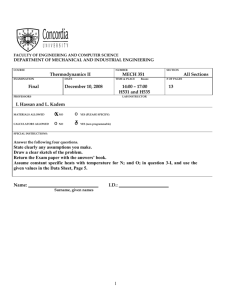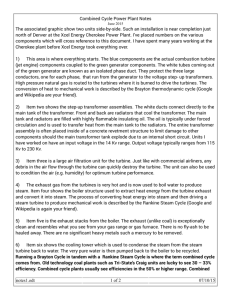Newsletter
advertisement
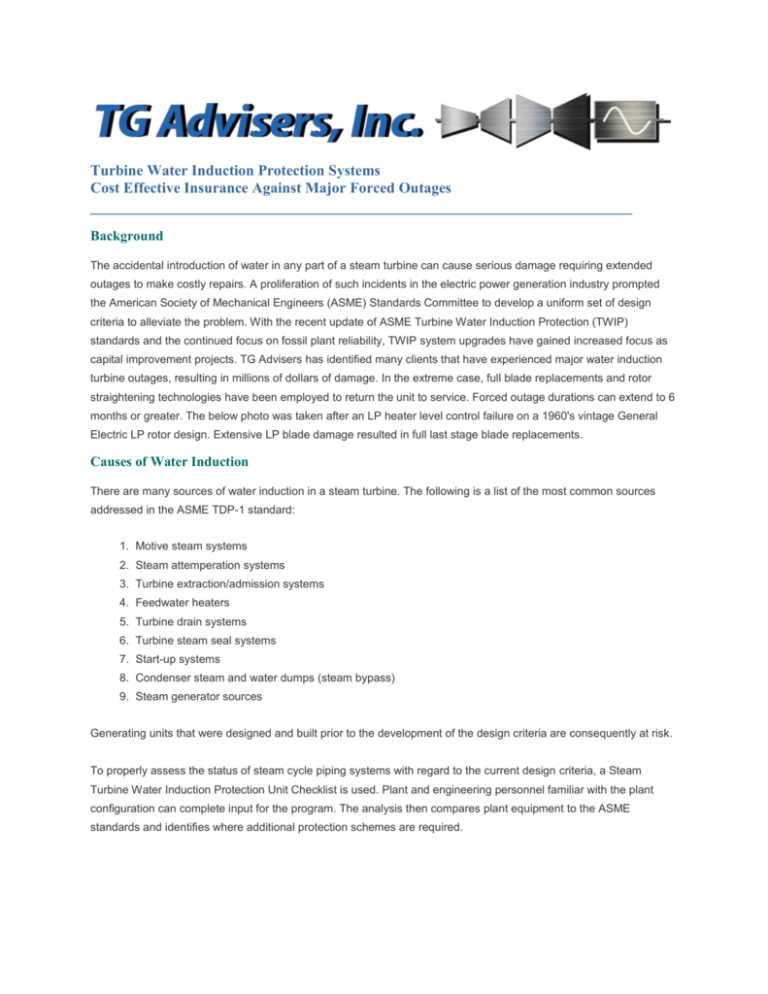
Turbine Water Induction Protection Systems Cost Effective Insurance Against Major Forced Outages ________________________________________________________________________ Background The accidental introduction of water in any part of a steam turbine can cause serious damage requiring extended outages to make costly repairs. A proliferation of such incidents in the electric power generation industry prompted the American Society of Mechanical Engineers (ASME) Standards Committee to develop a uniform set of design criteria to alleviate the problem. With the recent update of ASME Turbine Water Induction Protection (TWIP) standards and the continued focus on fossil plant reliability, TWIP system upgrades have gained increased focus as capital improvement projects. TG Advisers has identified many clients that have experienced major water induction turbine outages, resulting in millions of dollars of damage. In the extreme case, full blade replacements and rotor straightening technologies have been employed to return the unit to service. Forced outage durations can extend to 6 months or greater. The below photo was taken after an LP heater level control failure on a 1960's vintage General Electric LP rotor design. Extensive LP blade damage resulted in full last stage blade replacements. Causes of Water Induction There are many sources of water induction in a steam turbine. The following is a list of the most common sources addressed in the ASME TDP-1 standard: 1. Motive steam systems 2. Steam attemperation systems 3. Turbine extraction/admission systems 4. Feedwater heaters 5. Turbine drain systems 6. Turbine steam seal systems 7. Start-up systems 8. Condenser steam and water dumps (steam bypass) 9. Steam generator sources Generating units that were designed and built prior to the development of the design criteria are consequently at risk. To properly assess the status of steam cycle piping systems with regard to the current design criteria, a Steam Turbine Water Induction Protection Unit Checklist is used. Plant and engineering personnel familiar with the plant configuration can complete input for the program. The analysis then compares plant equipment to the ASME standards and identifies where additional protection schemes are required. In more severe water induction incidents, turbine rotors have been permanently bowed. Repairs in these cases could be as extreme as full rotor replacement or a combination of weld repair or heat treatment of the bow. Effective Countermeasures Based on the assessment, a number of different countermeasures can be employed to mitigate the risk of water induction damage: Upgraded level transmitters and associated modifications of the digital control system to include inputs and new alarm outputs. Installation of alternate feedwater heater drains to the condenser with a power operated block valves. Normally feedwater heater systems are equipped only with the normal cascading drain lines to the next lower pressure heater. Alternate drain lines in many cases are required to meet ASME code requirements. Installation of extraction steam line power operated block valves. Most units have power assisted non-return valves installed in the steam extraction lines; however these valves are not leak tight and were originally installed for overspeed protection, not water induction protection. Installation of feedwater block and bypass power operated valves where extraction steam line power operated block valves is not practical. Many low-pressure feedwater heaters were equipped only with manual block and bypass valves. Bottom line Upgrading turbine water induction systems can be a very cost effective way of ensuring long term reliability not just with older conventional units but also combined cycle plants which have been recognized in the new ASME TDP-1 standard, such as units with axial exhaust LP turbine and condenser configurations. In future issues, look for additional tips and case studies related to various common turbine-generator service issues. Newsletter #7: 2013-03-15 Contact us for additional information: Tel: (302) 691-3330 Email: mail@tgadvisers.com Web: www.tgadvisers.com
